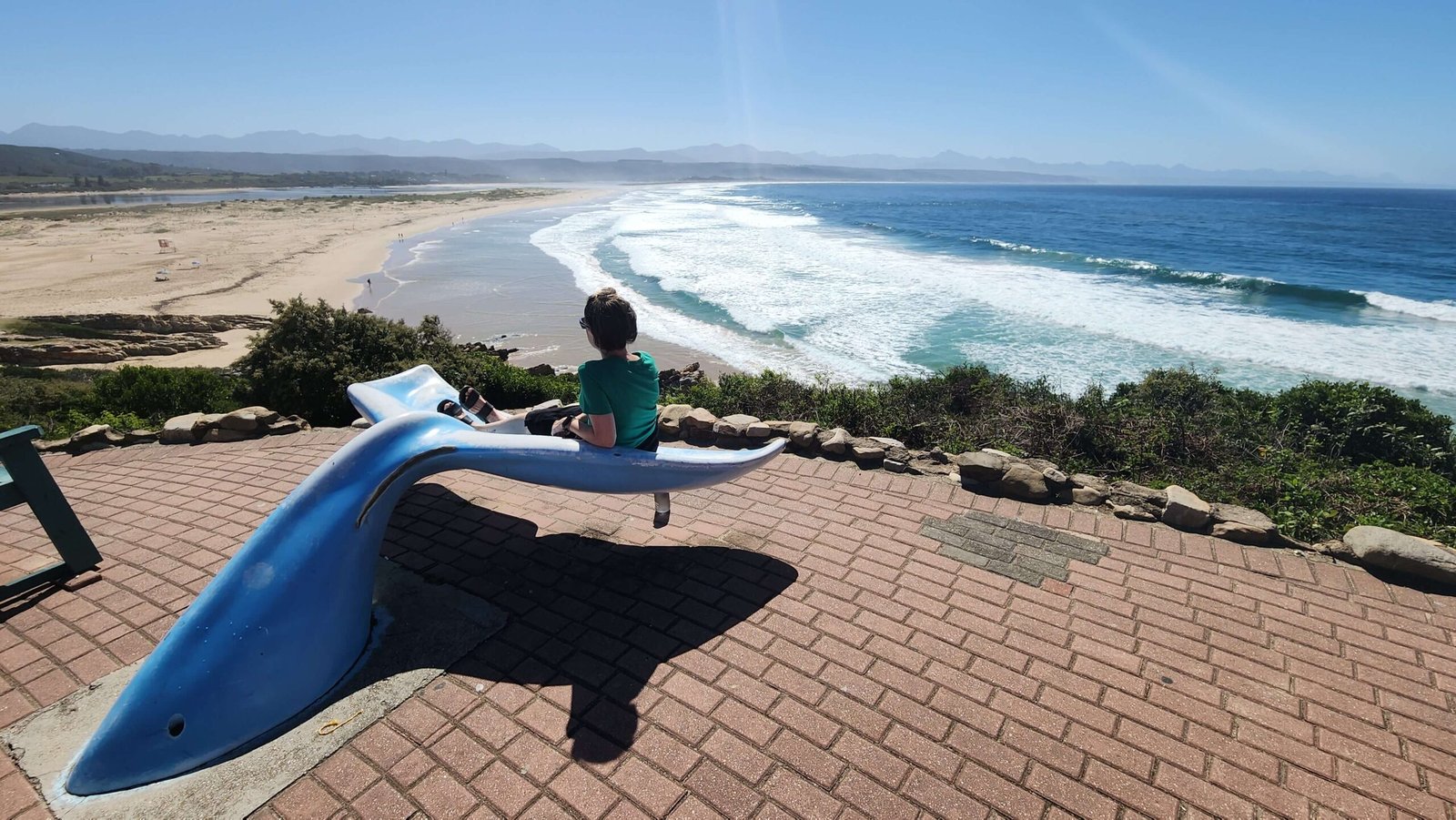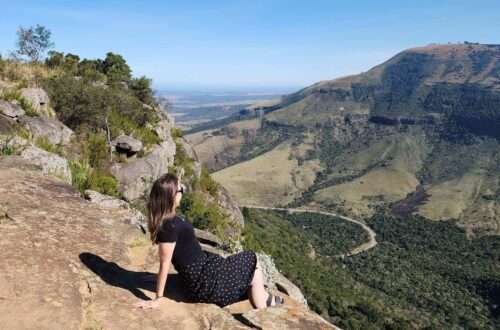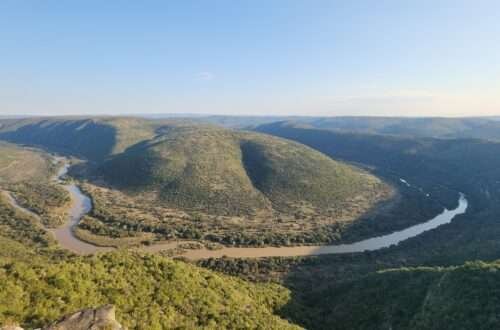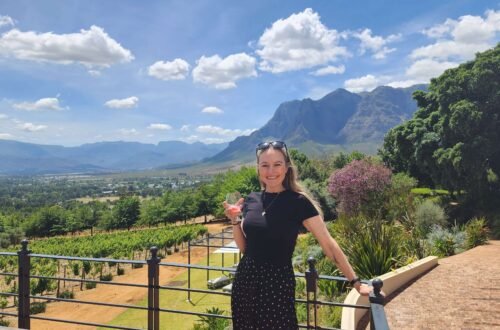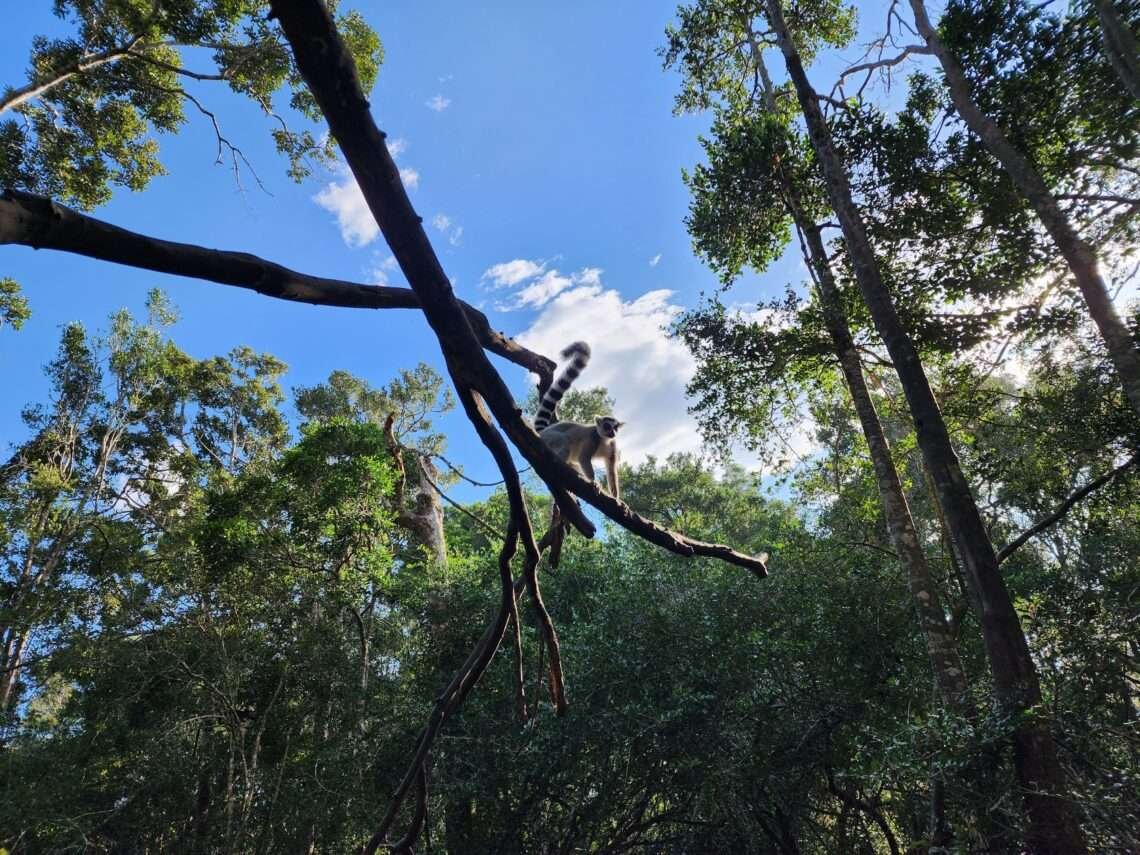
Monkeyland, Plettenberg Bay: Everything you need to know
Monkeyland is a fantastic primate sanctuary located in the heart of the Tsitsikamma Forest near Plettenberg Bay along South Africa’s Garden Route. Established in 1998, this multi-species primate haven spans 12 hectares of indigenous forest. It is one of the four sanctuaries that make up the South African Animal Sanctuary Alliance (SAASA). Monkeyland offers both an immersive and educational experience for visitors of all ages.
Conservation and Education
The primary mission of Monkeyland is primate conservation, but it is also a center for education and awareness. It is home to various species of primates, including capuchins, ring-tailed lemurs, howler monkeys, squirrel monkeys, and more. Many of these primates were rescued from captivity, abusive environments, or illegal trade.
The sanctuary strives to educate the public about the importance of conserving these incredible animals and their natural habitats. Therefore, visitors can embark on guided tours that provide insights into the lives, behaviors, and the challenges faced by primates in the wild. Subsequently, this educational aspect helps foster a deeper appreciation for these animals and their role in the ecosystem.
A walk through Monkeyland
One of the unique aspects of Monkeyland is the opportunity for visitors to stroll through the sanctuary and observe the primates up close in their natural habitat. The sanctuary is designed to mimic the natural environment of the animals so that they can move freely. As you wander along the winding forest paths, you can observe the various species going about their daily activities, from grooming each other to foraging for food.
Considered as the world’s first free roaming multi-species primate sanctuary (there are in fact over 550 primates here!), Monkeyland is a fun place to learn about these exciting animals.
There’s a small cafe at the entrance where you can purchase a light meal or grab a coffee before or after visiting.

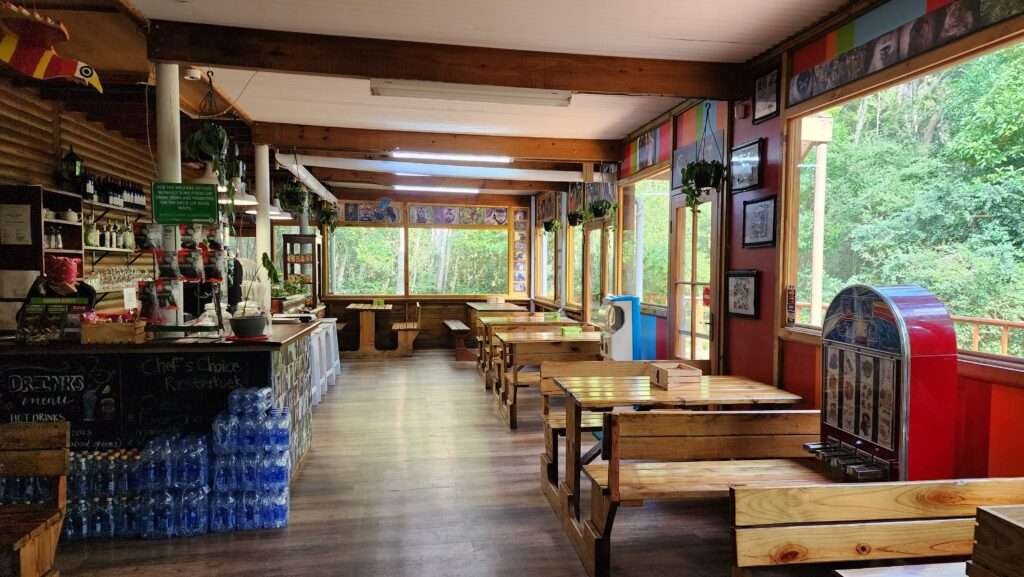
A knowledgeable guide takes you on an hour long walk through Monkeyland. This ensures both your safety and also provides you with fascinating information about the primates. You will also learn about their unique behaviors, remarkable abilities, and the harmful consequences of keeping them in captivity.
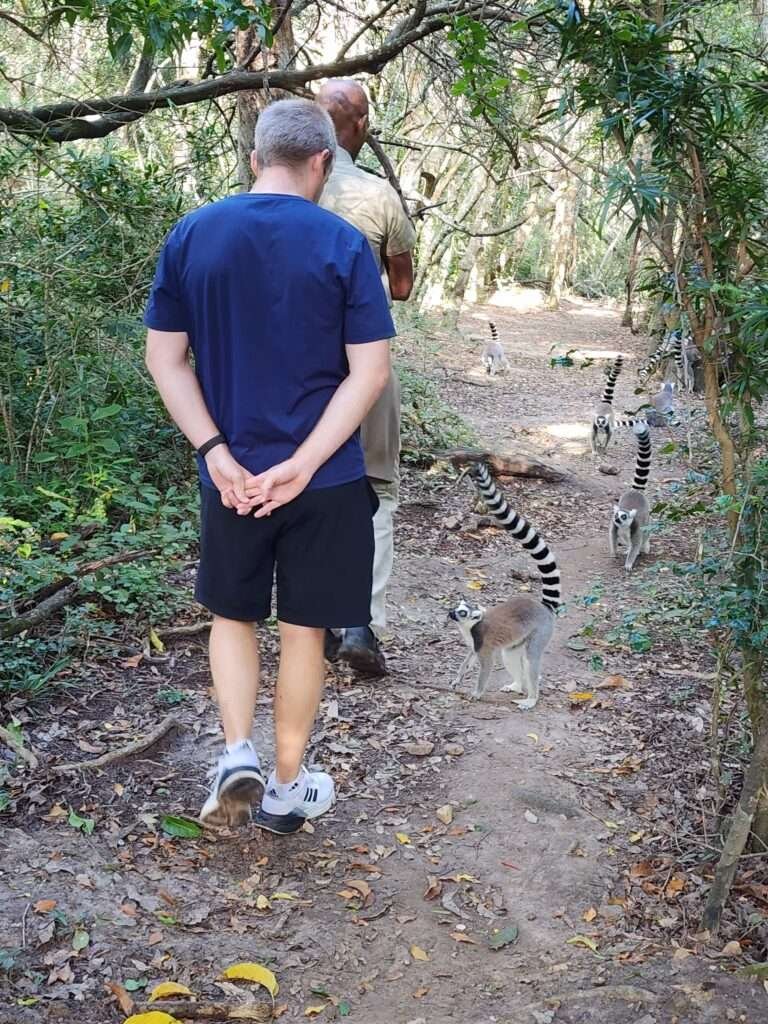
While the monkeys are encouraged to forage and consume natural leaves, berries, and fruits, the sanctuary must provide additional food. This is necessary because many of the monkeys originate from regions such as Indonesia or South America, and the forest in Monkeyland does not naturally offer sufficient suitable food.
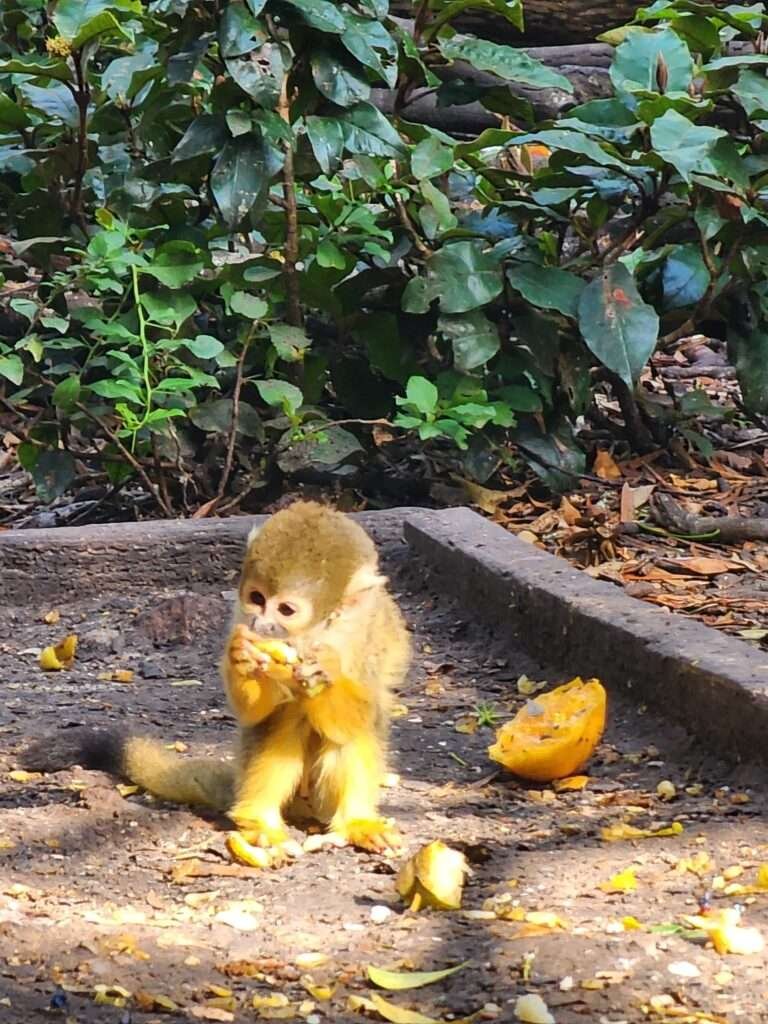
The species of Monkeyland
Monkeyland is home to over 550 primates divided into 9 species – listed below:
- The Black and White Ruffed Lemur
- The Ringtail Lemur
- The Black Howler Monkey
- The Bolivian Squirrel Monkey
- The Geoffroy’s Spider Monkey
- The Tufter or Brown Capuchin
- The Red-backed Barded Saki
- The Vervet Monkey
- The White-Handed or Lar Gibbon – Monkeyland’s only lesser ape species
During our visit, we were lucky to see 4 of the nine species, but these three below are the most common ones that visitor’s see.
The Ringtail Lemur
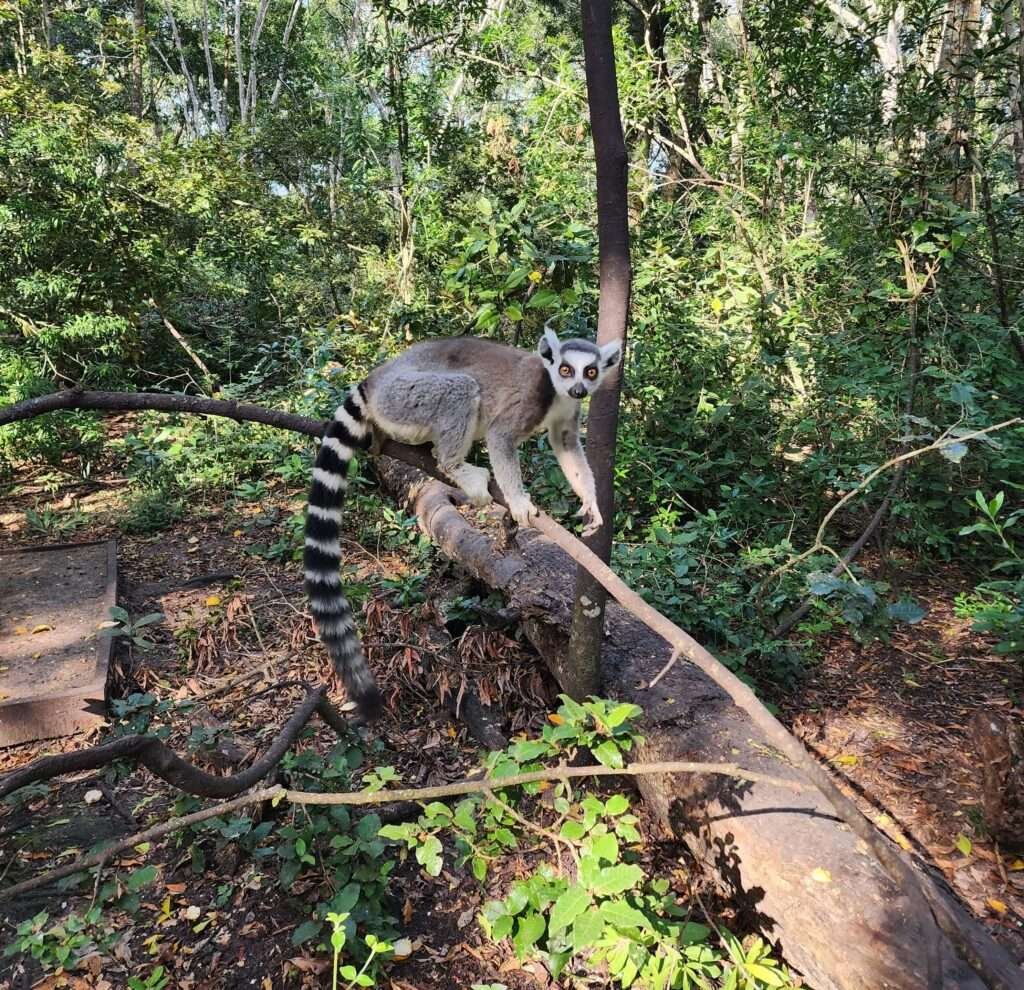
These beautiful looking primates were definitely my favorite! Originating from the African island of Madagascar, they live in a matriarchal society. Both their delightful demeanor and striking coloration combines to create a unique allure, and I thoroughly enjoyed observing their daily activities.
Hooded Capuchins
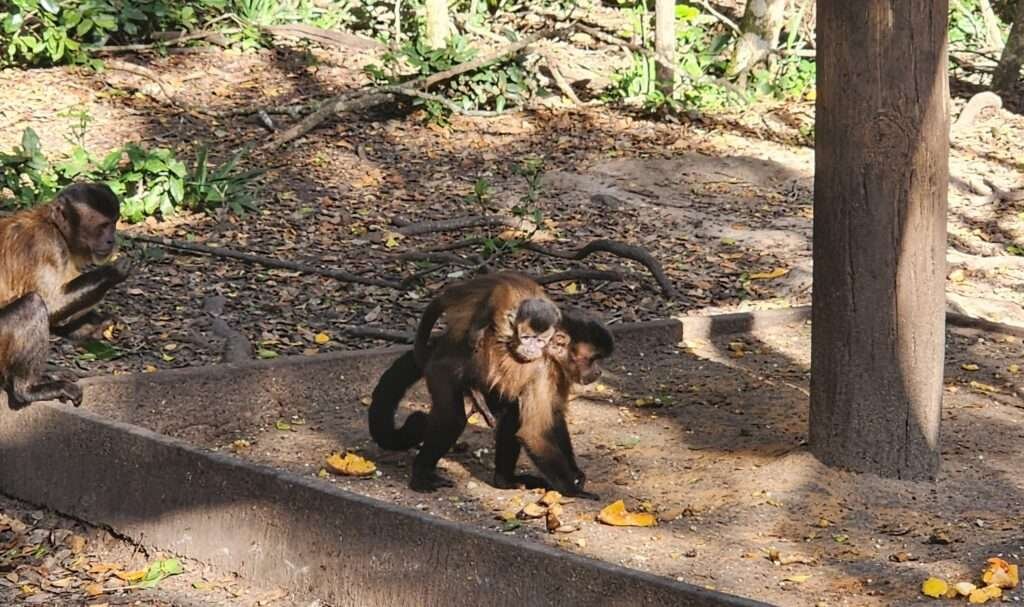
Hailing from South America, the capuchin monkeys are undeniably adorable creatures! Frequently cast in films thanks to their playful and comical antics, they are a joy to observe. During our visit, we even witnessed a capuchin monkey demonstrating its ability to use a rock to crack open a nut on the ground, showcasing their tool-using skills and underscoring their intelligence.
Squirrel Monkey
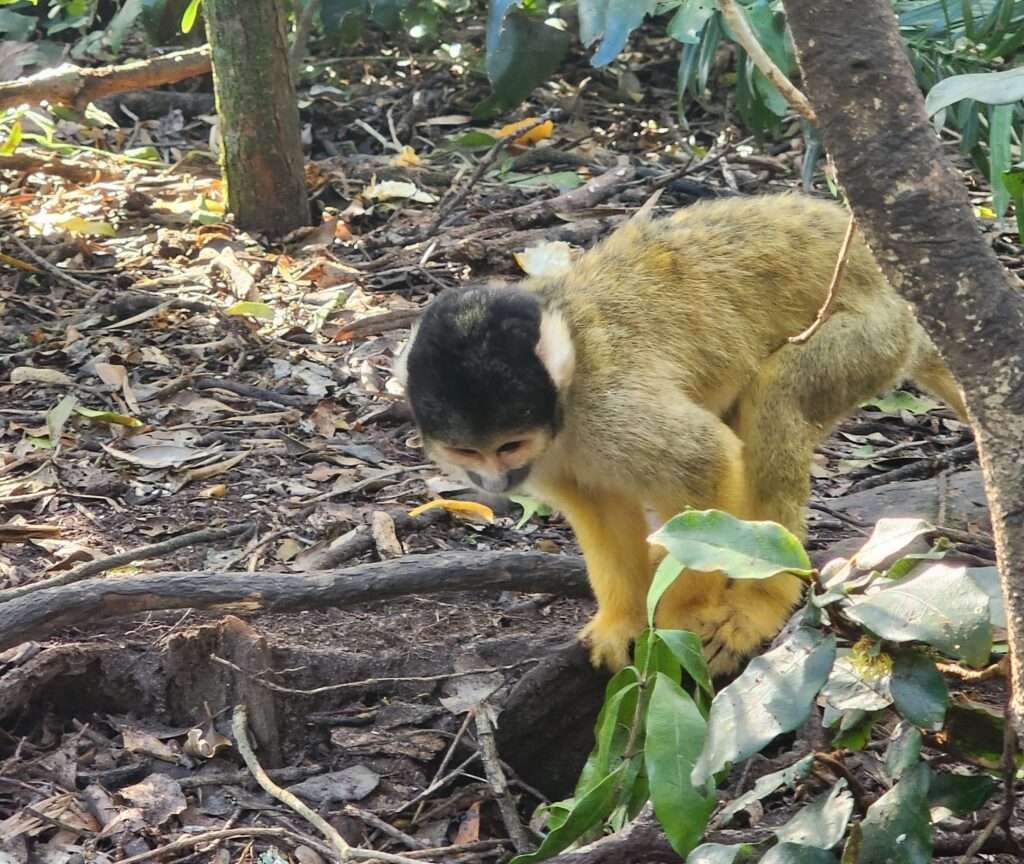
Squirrel monkeys inhabit the lush tropical forests of Central and South America. Their irresistible cuteness was on full display, and we were fortunate to spot tiny infants near the feeding stations as well.
The habituation cages at Monkeyland
While walking through the forest, you’ll see some big cages. Our guide told us these are pre-release enclosures where the primates get used to the forest and their interactions are closely watched. After about three months, they are set free in the forest to roam.

Stopping at a small pond, we looked out for the Vervet monkeys that are often seen cooling themselves in the water.
The suspension bridge
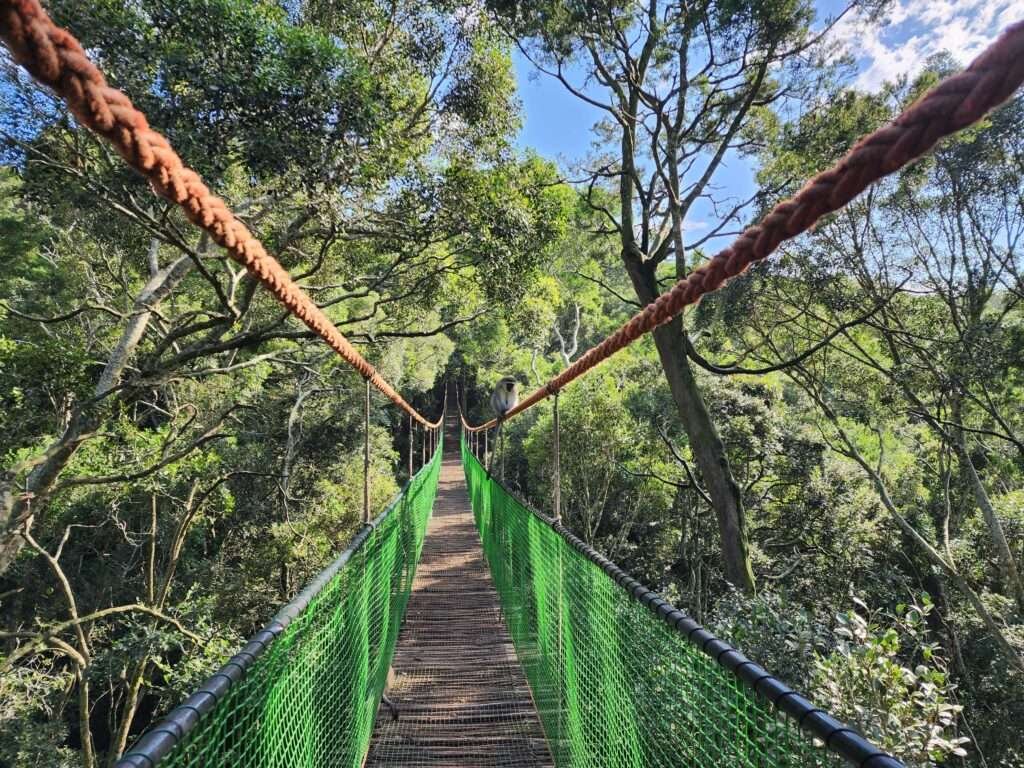
Our Monkeyland adventure ended on a 128m long suspension bridge. Being roughly 20 meters above the ground, this vantage point allows you to scan the forest for any primates making their way to this area. We spotted numerous vervet monkeys playfully darting along the ropes.
If you’re planning a trip to South Africa, don’t miss the chance to visit Monkeyland in Plettenberg Bay. Monkeyland is not just a tourist attraction; it’s a sanctuary committed to the welfare and conservation of primates. This remarkable place offers a unique opportunity to connect with our primate relatives, learn about their lives, and contribute to the preservation of their species.
Useful Information for Monkeyland
Where to purchase tickets for Monkeyland
Upon arrival, you have the option to buy a ticket at the store’s counter in Monkeyland.
Alternatively, you can buy tickets online through the monkeyland website.
To view current rates, visit Monkeyland’s official page.
Combined ticket savings!
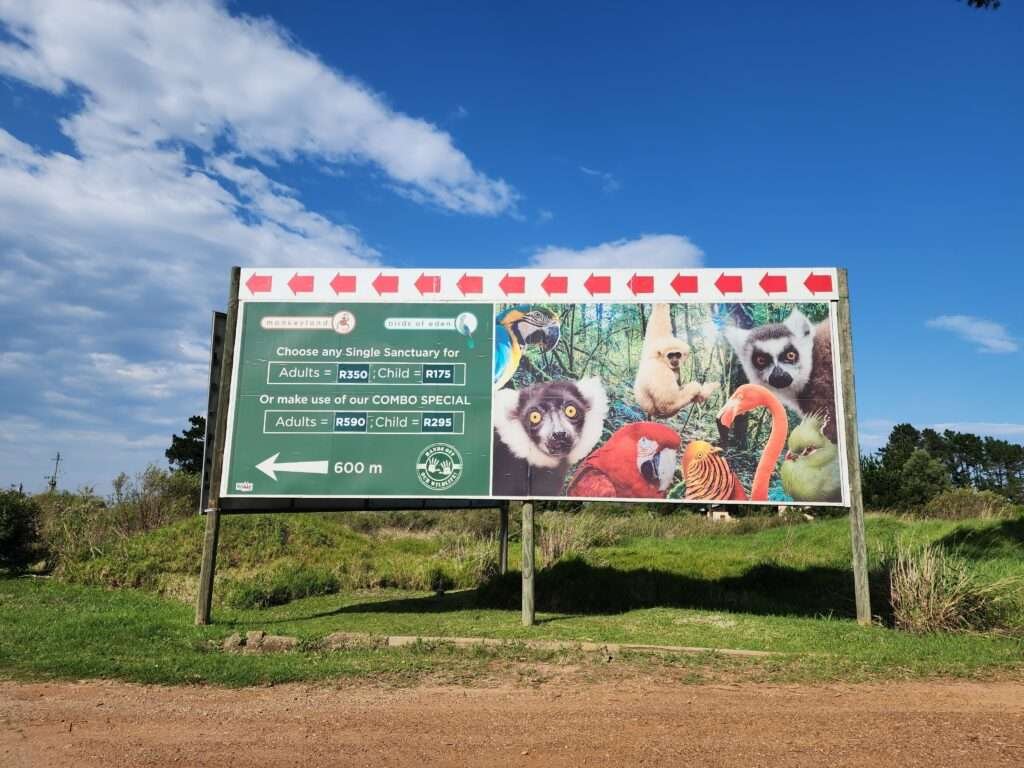
When you bundle your entry ticket with either Birds of Eden or Jukani Wildlife Sanctuary for R590, you’ll enjoy a savings of R110. Moreover, purchasing a ticket that covers all three sanctuaries – Monkeyland, Birds of Eden, and Jukani – for R700 will yield a whopping R350 in savings. Essentially, one of the venues becomes practically free!
When to visit Monkeyland
Mornings or evenings are best as this is generally when the monkeys are most active and this is also their feeding time. This makes it easy to watch them from the feeding platforms during this time.
Peppermill cafe near Monkeyland

Just a two minute drive from Monkeyland is the Peppermill Cafe. This cute cafe has both indoor and outdoor seating as well as a play area for children. The cafe sells a variety of light meals, from pizza to toasted sandwiches, to salads and burgers. Impressively, they also have a pretty great selection of wine available.
Explore the Best of the Garden Route: A Three-week itinerary


